Do you own a vasculum? If you were an active field botanist a century ago, the answer would undoubtedly have been a resounding yes!
Also known as a botanical box, these cylindrical, metal containers that opened along one side were used for temporary housing of collected plant specimens, protecting them from being crushed. They also provided a humid environment until the plants could be pressed into herbarium specimens.
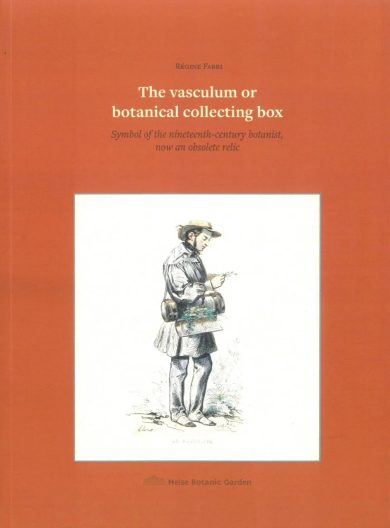 One of the newest and most unusual books in the Miller Library is The Vasculum or Botanical Collecting Box, which tells the history of these scientific tools, beginning in the 1700s. Makers of early examples experimented with different construction materials, with tinplate becoming the most common, although some were made of wood, canvas, or other metals.
One of the newest and most unusual books in the Miller Library is The Vasculum or Botanical Collecting Box, which tells the history of these scientific tools, beginning in the 1700s. Makers of early examples experimented with different construction materials, with tinplate becoming the most common, although some were made of wood, canvas, or other metals.
In the 20th century, their original purpose waned, but strapped over a shoulder, they became a pre-backpack accessory for children. Many were highly decorated or painted with bucolic scenes. Today, they are valuable collector’s items!
Régine Fabri, the retired former head of the library at the University of Liège in Belgium, researched and wrote this book in French. She inherited her grandmother’s vasculum dating from around 1900 and “had no idea that my grandmother’s beautiful box was not just a child’s toy, but a piece of real scientific equipment.”
In an unusual publication twist, the English edition was first written by DeepL Translate, a machine translation service. This draft was then proofread and revised by Henry Noltie from the Royal Botanic Garden Edinburgh.
Winner of the 2025 Annual Literature Award from the Council on Botanical and Horticultural Libraries, the book’s text is extremely well-researched and documented with extensive notes and a bibliography. However, it is the over 300 photographs and other images that will catch your eye. They document how this scientific tool became a cultural icon, extending even into the 21st century as stylish handbags or baskets. Who knew that botanists could become fashion trendsetters!
Reviewed by Brian Thompson
Excerpted from The Leaflet, Volume 12, Issue 11, November 2025
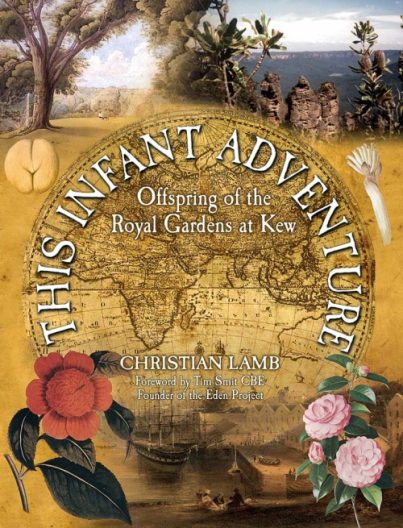 In This Infant Adventure Christian Lamb takes the reader to ten of these offspring. Her focus is on the commercial purposes of the gardens and especially on the botanical explorers who worked at and adventured from them. For each garden Lamb describes its history, often noting the tension between those who saw the goal as a pleasure garden only and those who sought scientific collection methods and commercial uses.
In This Infant Adventure Christian Lamb takes the reader to ten of these offspring. Her focus is on the commercial purposes of the gardens and especially on the botanical explorers who worked at and adventured from them. For each garden Lamb describes its history, often noting the tension between those who saw the goal as a pleasure garden only and those who sought scientific collection methods and commercial uses.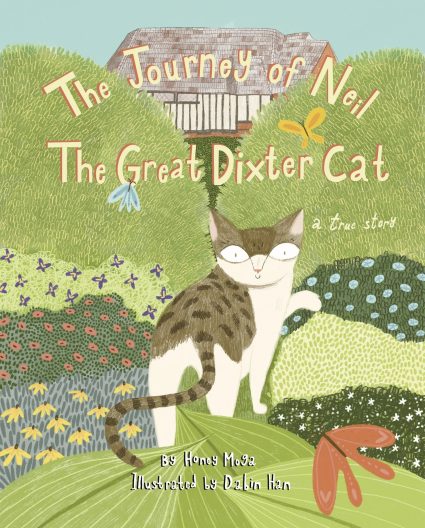 We love all our new books, but some stand out. The Journey of Neil, the Great Dixter Cat, presented to the library by Fergus Garrett during his September visit to Seattle, tells the fascinating story of a kitten from the streets of Kabul, Afghanistan who came to be a popular fixture at the well-known garden in Sussex. Written by Honey Moga, the kitten’s naming, personality, friendships with Fergus and others at Great Dixter, and adventures with the garden’s resident dachshunds, Conifer and Miscanthus are all presented in Dabin Han’s lively illustrations, along with key elements of the history of Afghanistan. Check it out!
We love all our new books, but some stand out. The Journey of Neil, the Great Dixter Cat, presented to the library by Fergus Garrett during his September visit to Seattle, tells the fascinating story of a kitten from the streets of Kabul, Afghanistan who came to be a popular fixture at the well-known garden in Sussex. Written by Honey Moga, the kitten’s naming, personality, friendships with Fergus and others at Great Dixter, and adventures with the garden’s resident dachshunds, Conifer and Miscanthus are all presented in Dabin Han’s lively illustrations, along with key elements of the history of Afghanistan. Check it out!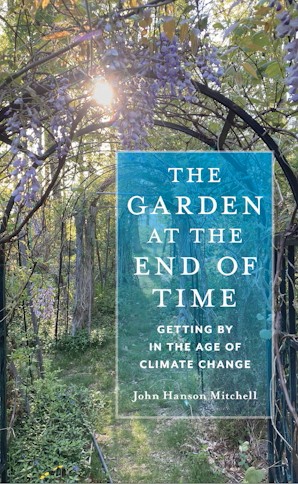 Whenever overwhelmed by news of a new climate-related disaster, John Hanson Mitchell buys a new rose bush. He explains it as a philosophical statement of resistance.
Whenever overwhelmed by news of a new climate-related disaster, John Hanson Mitchell buys a new rose bush. He explains it as a philosophical statement of resistance.
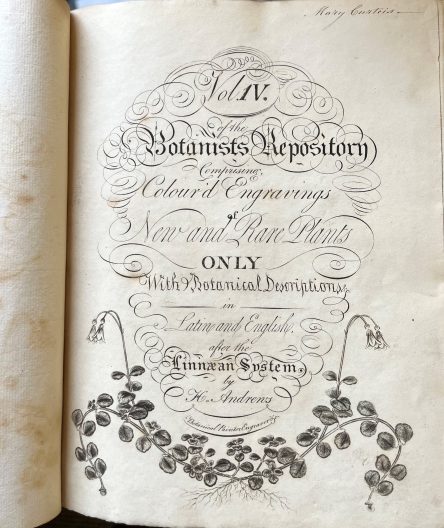 There still is nothing known about his place of birth, or little else before he became an active illustrator. In 1797, he began publishing The Botanist’s Repository, the first significant rival to
There still is nothing known about his place of birth, or little else before he became an active illustrator. In 1797, he began publishing The Botanist’s Repository, the first significant rival to 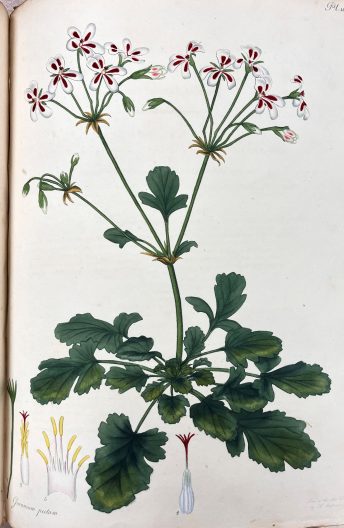
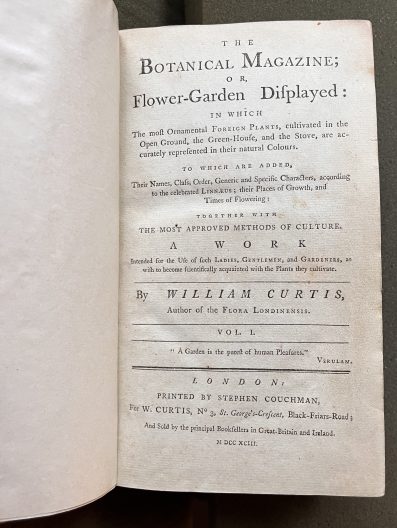 Curtis collected a library of 250 books and was an active writer, publishing papers over a range of natural history subjects. This included an attempt to write the flora of all the plants native within a ten-mile radius of London as he was an early conservationist and concerned with the loss of plant habitats as the city grew.
Curtis collected a library of 250 books and was an active writer, publishing papers over a range of natural history subjects. This included an attempt to write the flora of all the plants native within a ten-mile radius of London as he was an early conservationist and concerned with the loss of plant habitats as the city grew.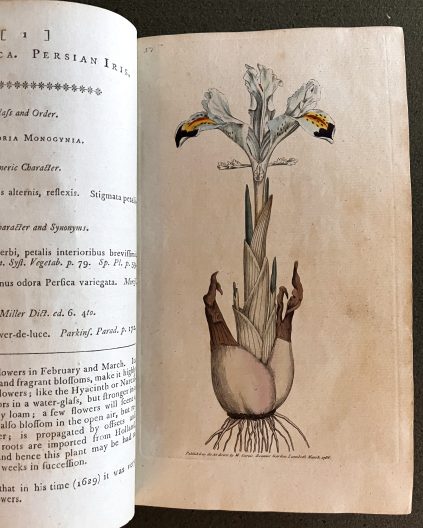 nd all of the 21st century issues are available in the Miller Library.
nd all of the 21st century issues are available in the Miller Library.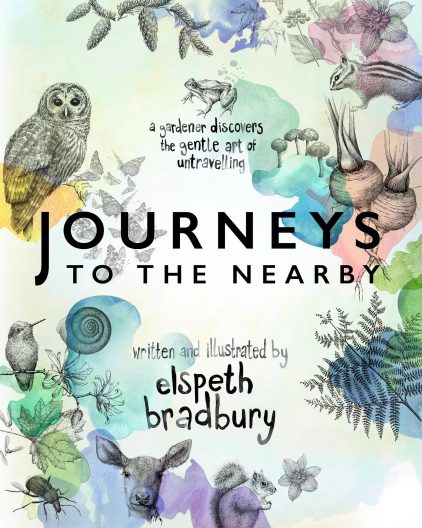 In one chapter she describes her failed efforts to convince a clematis to grow over a pergola crossbeam. The polite but uncooperative plant reminds her of Maggie Smith as the Dowager Countess in Downton Abbey murmuring, “My dear, I told you so.”
In one chapter she describes her failed efforts to convince a clematis to grow over a pergola crossbeam. The polite but uncooperative plant reminds her of Maggie Smith as the Dowager Countess in Downton Abbey murmuring, “My dear, I told you so.”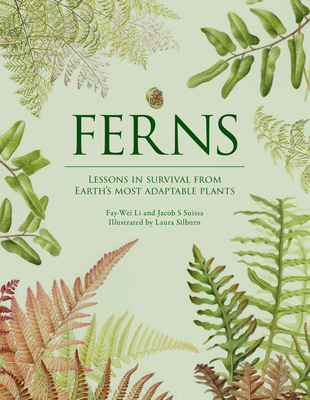 “Ferns: Lessons in survival from Earth’s most adaptable plants” by Fay-Wei Li and Jacob S. Suissa and illustrated by Laura Silburn takes a different approach. This is a study of the impressive evolutionary and adaptability history of these plants, that can be found throughout the world in almost every climate and ecosystem.
“Ferns: Lessons in survival from Earth’s most adaptable plants” by Fay-Wei Li and Jacob S. Suissa and illustrated by Laura Silburn takes a different approach. This is a study of the impressive evolutionary and adaptability history of these plants, that can be found throughout the world in almost every climate and ecosystem.